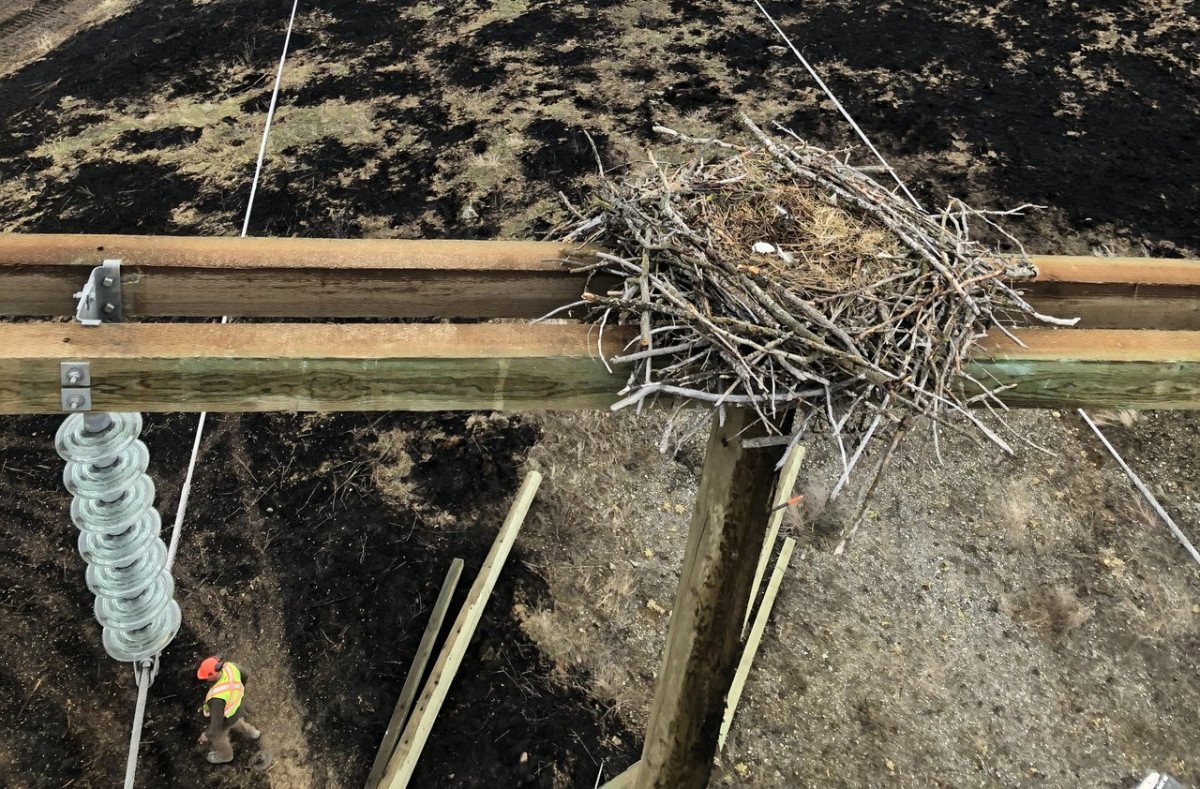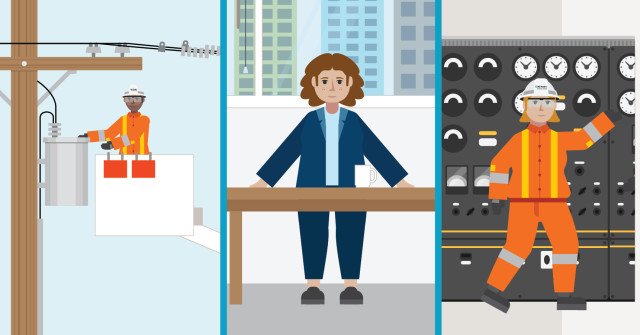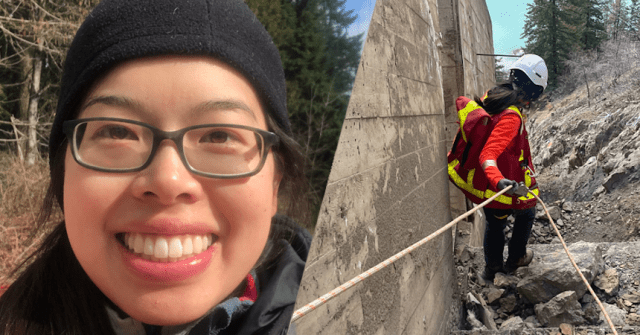While not the safest place to build a nest, many of our poles near lakes, rivers and streams are popular building sites for birds of prey. We work with environmental experts to mitigate risk and move select nests. This helps keep our equipment and our feathered friends safe.
A recent grass fire damaged 6 poles near Chase, B.C. As part of emergency response efforts to restore power, a crew of power line technicians (PLTs) and environmental field staff had to relocate a large nest with a single bald eagle egg that was found on top of a damaged wooden transmission tower.
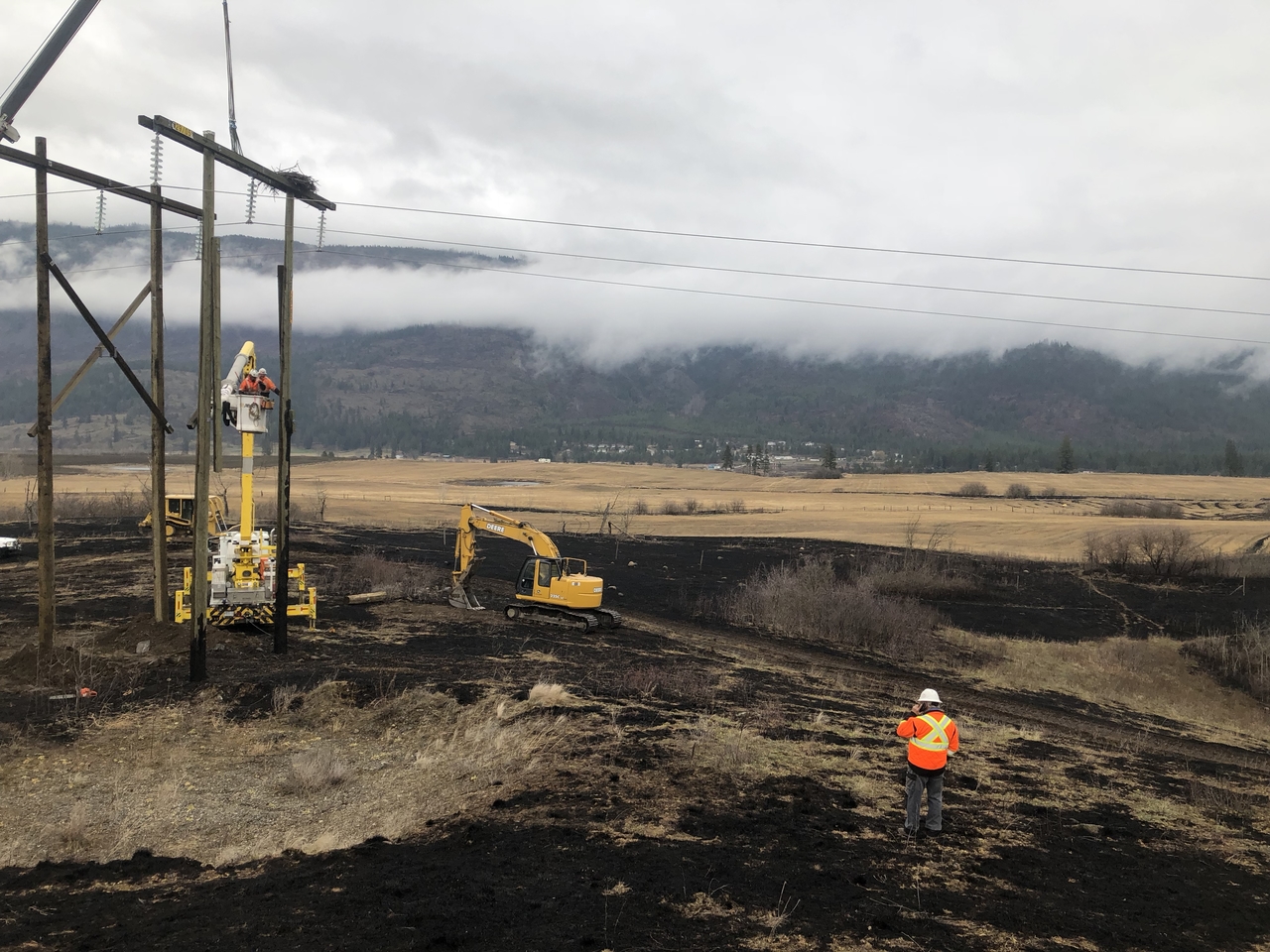
Working with osprey isn't anything new for our crews. They have an extensive record of nest moves guided by species-specific environment best management practices and nest mitigation procedures. However, our crews don't run into bald eagles as often.
This is a pretty rare occurrence as bald eagles typically nest in trees. The egg was handled with surgical gloves to remain scent-free and was placed in a clean, straw-filled pail, then covered and placed into a temperature-controlled vehicle while the nest move was completed.
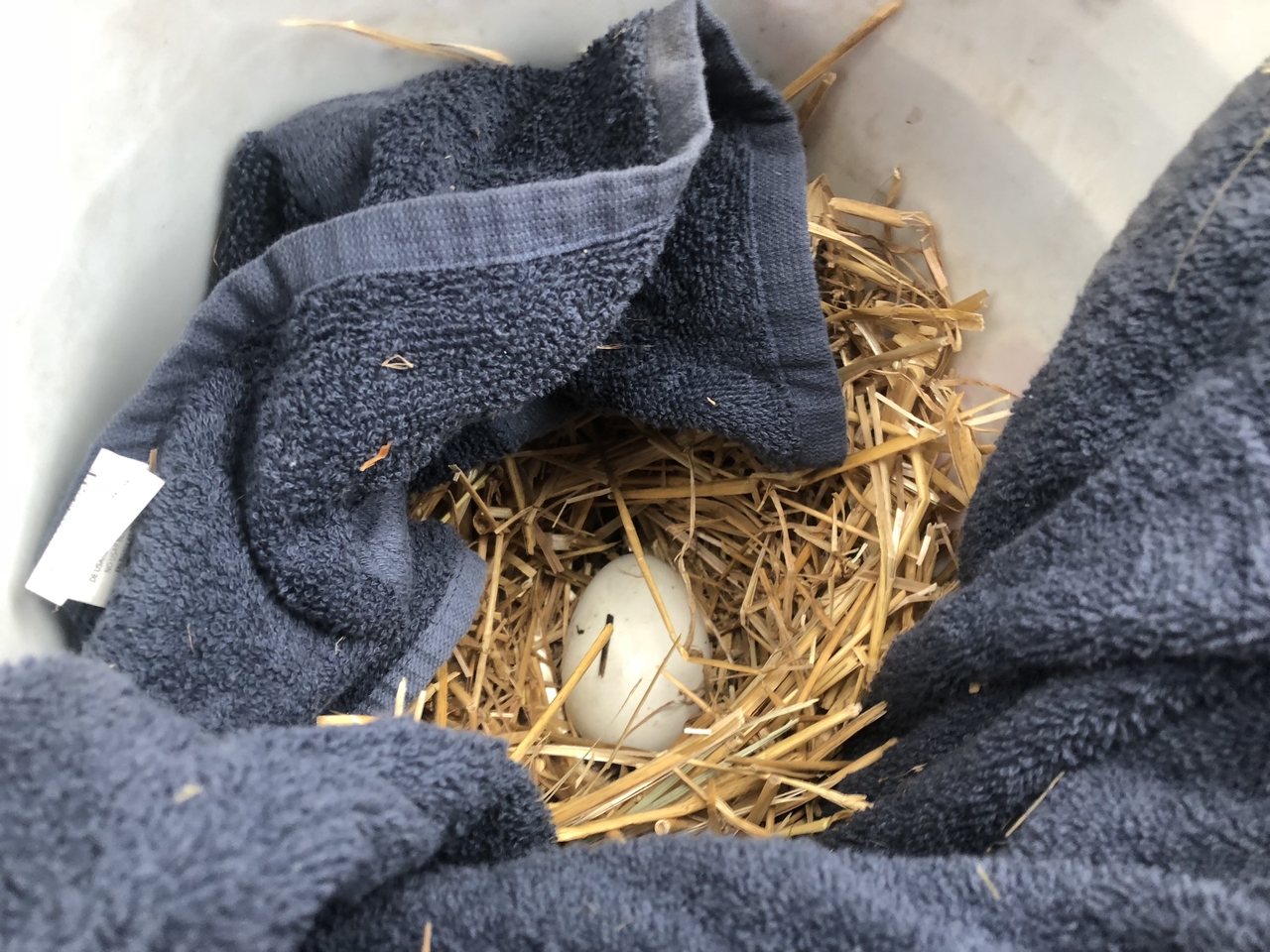
The nest and pole-top were cut free from the damaged structure and lowered by crane to the ground. Then the nest was returned to the top of the replacement transmission structure.
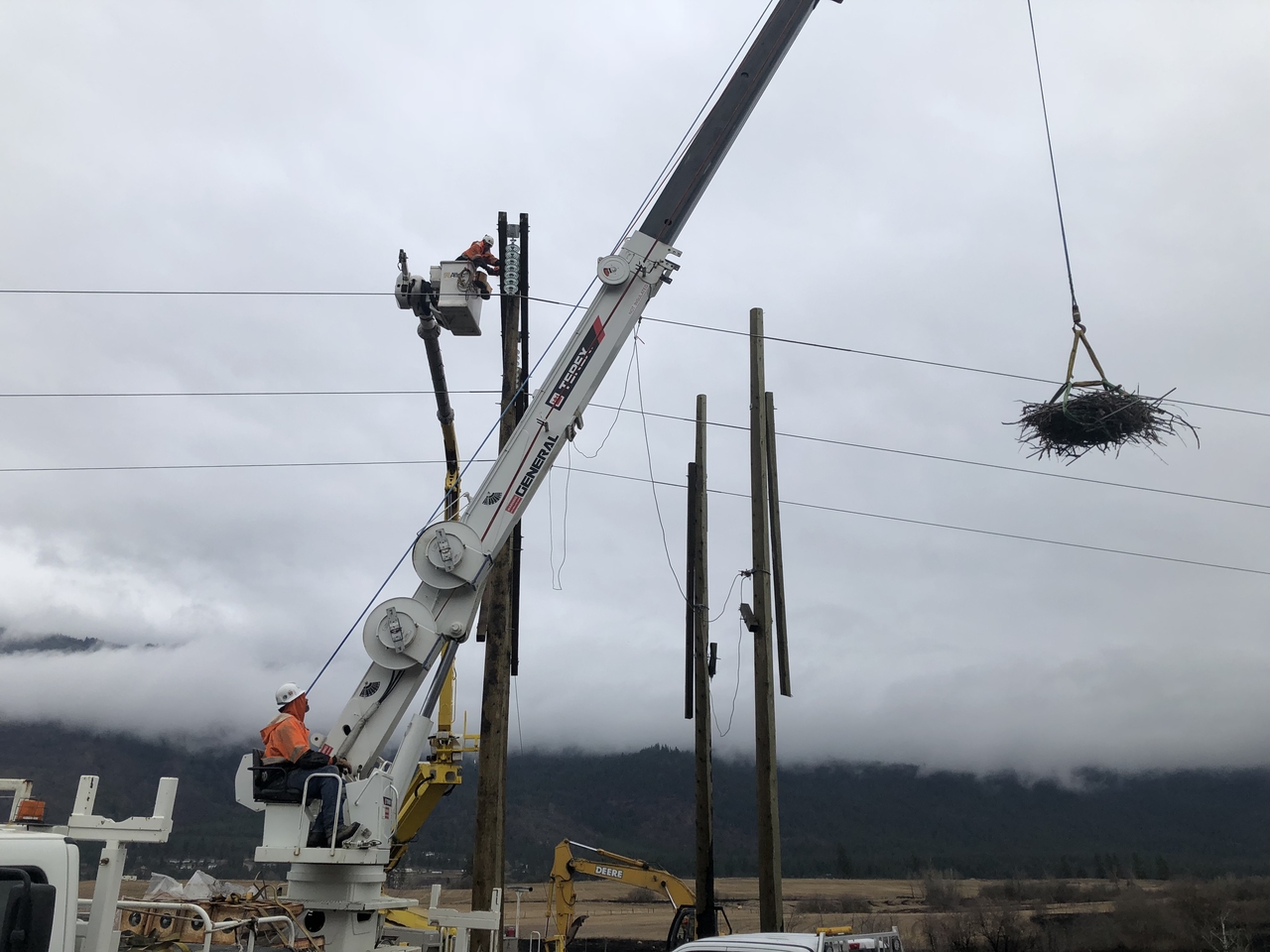
Once the work was complete, the mother bird was observed showing interest in the nest and was back home with their nest egg the following morning.
Every interaction with wildlife in the field provides our team with information that contributes to the ongoing development of valuable tools for field crews, environmental managers and design teams.
